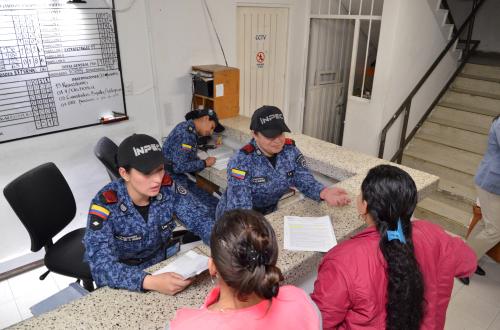When we talk about access to justice, a key consideration is “access for whom?” While access is often made widely available by law, in practice it is heavily dependent on resources and knowledge. Access is practically defined by resources and opportunities. It is often obstructed by overlapping layers of vulnerability, including poverty and limited financial resources, race, sexual orientation, gender, language, lack of institutional trust, education level, and physical access to justice institutions like courts, lawyers, and other legal professionals.
One way to measure real access to justice is to look at how people experience legal problems, or “legal needs.” The growth of household surveys measuring frequency, type, impact, and resolution of legal problems has made this measure one of the more data rich. Assessing the distribution of the frequency and type of legal problems and their impacts can help start to explain the “access-for-whom” question.
Legal Needs Surveys conducted by The Hague Institute for the Innovation of Law (HiiL) provide a unique data set on experience with legal problems. These household surveys are particularly useful in identifying the prevalence and impacts of legal problems. Since the surveys also collect information on household income levels, we can explore the distribution of legal problems and their impacts across income groups.
The data comes from 13 country surveys covering a mix of low-, middle- and high-income countries: Yemen (2014), Mali (2018), Uganda (2019), Bangladesh (2018), Indonesia 2013/14), Kenya (2017), Nigeria (2015), Tunisia (2016), Morocco (2018), Jordan (2017), Lebanon (2017), Fiji (2018), and the United Arab Emirates (2015). It represents over 70,000 respondents. The incidence of households reporting at least one legal problem in the recent past ranges from 94 percent in Yemen to 15 percent in Indonesia. Data from individual surveys is available on HiiL’s Justice Dashboard.
The data suggest the following:
1. Low-income households are more likely to experience legal problems
The relationship between household income and legal problems is not linear but legal problems tend to cluster in the lower half of income brackets (Figure 1). Households in the income bracket just above the lowest most often report legal problems. The distribution of legal problems across income brackets follows roughly the same pattern in each country, with the exceptions of Kenya, Uganda, and Fiji which vary only slightly with income.
There are several possible rationales for these findings. Economic and social exclusion of those households in the lowest income bracket may preclude them from participating in actions that could be described as “legal problems” in the surveys. Those in income brackets just above the lowest may have opportunities to more fully participate in economic and social life but lack the resources of those in higher income brackets to navigate legal frameworks and absorb legal shocks, making them particularly susceptible to legal problems. There is also the possibility that social safety net programs shield the poorest from legal problems, but also the reality that this group may find it more difficult to identify their problems as legal in nature and report them as such.
Figure 1. The relationship between household income and legal problems

 Source: Author.
Source: Author.
2. Low-income households are more likely to experience certain types of legal problems
In addition to being more likely to face legal problems, are low-income households more frequently affected by certain types of problems? To answer this question, we created income quartiles combining data from all of the country surveys and distributed the most commonly reported legal problems across quartiles.
We found that the distribution of types of legal problems was not equal (Figure 2). The lower half of income quartiles account for between 63 percent and 81 percent of the most common legal problems. Economic assets may be negatively affected by land, employment, and money problems, while human development may be undermined by unresolved housing issues. Agency may be weakened by family and crime problems, and trust undercut by unsettled corruption concerns. Problems involving accidents, if left unresolved, may prevent those affected from addressing resulting health problems.
Figure 2. Distribution of legal problems across income quartiles
 Source: Author.
Source: Author.
3. Low-income households suffer adverse impacts from legal problems
Legal problems result in numerous negative impacts, most commonly affecting household allocation of time, loss of income or jobs, and health in the form of injuries from accidents or crime (Figure 3). Breakdowns of family relationships are common, producing their own negative effects. It is important to keep in mind that the legal problems more likely to produce negative impacts—namely land, employment, crime, family, corruption, and accidents—are the same problems more likely to be experienced by lower-income households (as in Figure 2, above).
Figure 3. Impacts of most prevalent legal problems
 Source: Author.
Source: Author.
The impacts of legal problems are also not distributed equally across income quartiles. Households in the poorest quartile were most likely to report adverse impacts on their time, income, and jobs (Figure 4). The distribution is reversed for impacts on relationships, possibly reflecting damage to the more extensive business and financial relationships of those with higher incomes. What does this mean in practice for the poorest households? Household members may have to reallocate time away from working, studying, or caring for children toward resolving their legal problems. They may have to use income to cover associated legal costs, shifting it away from food or housing costs. The consequences of legal problems, such as injury from an accident or crime-related imprisonment, may also cause those affected to miss time at their jobs or lose them altogether.
Figure 4. Type of impacts of legal problems by income
 Source: Author.
Source: Author.
The increased attention to access to justice in development is highlighted by the goal of “equal access to justice for all” under Sustainable Development Goal 16.3. Our findings support other research identifying the unequal distribution of legal problems and their negative impacts across income groups. They suggest that wider development goals may be undermined if gaps in access to justice are not effectively addressed. At present, legal problems are an unnecessary burden on low-income households, preventing them from enjoying the full benefits of social and economic development.







Commentary
Do the poor suffer disproportionately from legal problems?
March 23, 2022